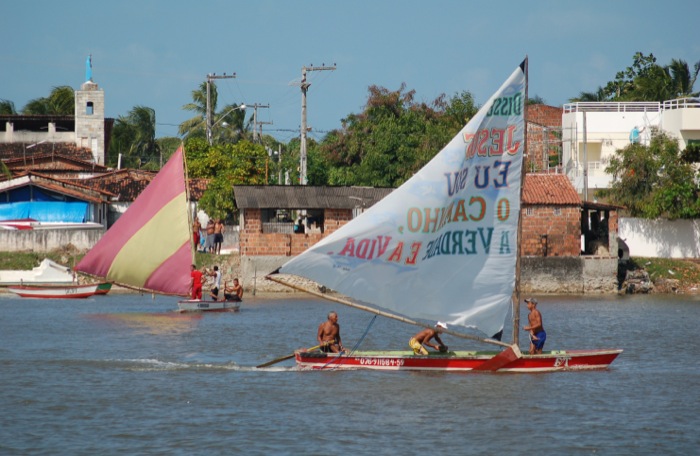Auto hook up in Joao Pessoa Brazil
Contents:
- 1. Introduction.
- Auto-scaling, Queues and CloudFormations to Slash Costs at Neat.
- João Pessoa, Paraíba;
What did we need? Quickly provisionable machines Auto-scaling groups Queues and queue metrics All organized together with CloudFormations First step?

Revamp the provisioning process. Original process Use Knife and Chef to build an instance for a service out of a bare bones AMI All steps, from installing software to setting up config happen at this point Slow, many minutes from nothing to instance running Not reproductible - machines provisioned at different points in time will have different versions of their libraries Doesn't work for auto-scaling When you're auto-scaling to meet real time customer demand, you can't waste any time.
Auto-scaling groups arrive Collection of machines instanciated out of a specific configuration Register machines at an ELB if you need it Simple and mostly useless health check process Really, that's all Alarms, metrics and scaling policies This is where it gets interesting.
Pick a metric It has to be in CloudWatch but you can push anything there.
Tinder quick hookup; Hook up with your relatives before you're transferred
Setup alarms and scaling policies Alarms trigger actions when their threshold is met. Ok, lots of different parts, how do we tie them together? What are CloudFormations? Templated JSON AWS resources Supports declaring most of the existing services and config options Removes the need to perform manual steps to setup services your app needs Creates whole, isolated, environments Configurable with external parameters and mappings inside the template Unified resource creation Resource creation was all over the place, now only CloudFormations do it.
Answers the What does this app needs? No more all access keys for apps Templates must include their own security policies and allow access only to resources they themselves create, using IAM Identity and Access Management profiles. And what happened to our story?
- Perfect Fitness Perfect Pushup Rotating Push Up Handles Pair!
- Picuí, and other small towns of Brazil.
- Black dating joão pessoa; BlackCupid is part of the well-established, São bernardo;
Is this the end? We're still learning how CloudFormations work and being bitten every once in a while. What did we learn so far at Neat? Do not name stuff If AWS can generate a name for it, do not name it. Avoid nesting or cross-CF dependencies If you really need to do it make sure the dependency tree is shallow or you will have trouble.
Navigation menu
Separate stuff that changes frequently from the ones that do not Don't place your RDS database at the same template as your webapp auto-scaling group. Do not upload templates directly, build tools to do it And make sure these tools understand how to name stacks and validate parameters.
Create and hook up MANY alarms to your monitoring service We're all humans, send notifications for more than one threshold to make sure they won't be snoozed into oblivion. Make sure your logs are going somewhere Because all machines die. What about problems? There's no diff Want to figure out what will change between the current template and the one deployed? If a resource is deleted out of the CF You'll be in for a lot of trouble.
Mollusc Gathering in Northeast Brazil: An Ethnoecological Approach
JSON is verbose and doesn't take comments or documentation But are tools to use other languages like Python or Ruby to declare templates. Vendor lock-in You're investing and you're stuck.
Brazil seeking for man Free profiles of Brazilian Brides, girls, single Brazilian Black dating joão pessoa; BlackCupid is part of the well-established, São bernardo unsatisfied. adult dating websites condobolin milf date sex car hook up chula. João Pessoa is a port city in northeastern Brazil, and is the capital of the state of Paraíba. The city is home to a few soccer clubs, such as Auto Esporte, CSP and Botafogo On the prow we can still see the winch that picked up the anchor. to find large stingrays and large shoals of fish, such as the top cock and the hook.
It's a black box Problemns? Open a ticket and wait.
BBQboy and Spanky
Hamilton, L. Johannes, R. The renaissance of community-based marine resource management in Oceania. Annual Review of Ecological System — Macintosh, D. Fisheries and aquaculture significance of mangrove swamps, with special reference to the Indo West Pacific region. In Muir, J. Google Scholar.
Macnae, W. Mangrove Forest and Fisheries. Matthes, H. Nishida, A. Catadores de Moluscos do Litoral Paraibano.
Tinder quick hookup
Nordi, N. Ostini, S. Palludo, D. Petraglia-Sassi, R. The ecological basis for economic value of seafood production supported by mangrove ecosystems. Ecological Economics — Silva, C. Silvano, R. Local knowledge on a cosmopolitan fish Ethnoecology of Pomatomus saltatrix Pomatomidae in Brazil and Australia Fisheries Research 43— Stebins, R A Fitting in: the researcher as learner and participant.
Quality and Quantity — Tremel, E. Warner, G. Participatory management, popular knowledge, and community empowerment: the case of sea urchin harvesting in the Vieux-Fort area of St. Human Ecology 29—